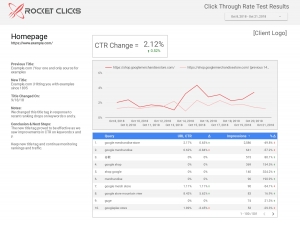The opportunities for remarketing in the Google ecosystem have grown immensely in the last couple of years.
Creating audience lists in Google Analytics is great because it goes beyond the basic targeting used in the past, in which users were segmented into groups based on which URLs of your website they had previously visited. Now, advertisers can generate higher performing audiences by accessing more post-click information and layering these in to develop more precise lists.
In contrast to other blogs on the topic, this article will examine the four principles that can guide the creation of any remarketing list, especially those built-in Google Analytics. If you master these principles, you can apply them to most any application, recognizing that the tactics or specific combinations of targeting layers may change dependent on context and goals.
The Four Principles
The nature of the data collected on users in Google Analytics allows us to segment them in many different combinations, but the segments themselves are finite and can be categorized into four conceptual areas:
- Recency, which includes any measure or application of time and answers “when.”
- Reach, which is the scope of the audience and answers “how many.”
- Proximity, which deals with any location-based parameters and answers “where.”
- Context, which deals with the assumed intent of the user based on any behavioral metrics and answers “what.”
Principle One: Recency
The recency principle encompasses all temporal markers that are used to answer the “when” question. More specifically, recency is an important consideration when availability is limited, seasonality affects sales, you are offering a promotion, your product is a consumable and may be re-purchased, and other context-dependent cues.
One of the challenges in developing high quality recency principle targeting strategies are the default settings traditionally used in many platforms and examples. For instance, things like average cookie duration windows and “all users last 30 days” audience lists created automatically in Google AdWords have created a dangerous pattern of thinking, and many advertisers fall prey to never looking beyond these for opportunities.
Consider alternatives. For instance, seek to answer some context-dependent questions like:
- How long does it take on average to sell my product to an online visitor?
- When is the ideal time to re-insert myself into a person’s mind for further consideration?
- When do users spend the most for my best-selling product or service?
- When would users be open to considering an accessory or related product?
Related Google Analytics Metrics
The below metrics are the specific dimensions that can be manipulated in order to created layered recency-based audiences.
- Days since last session
- Session duration
- Date of first session
- Days to Transaction
- Session Date
- Membership duration
Examples of Recency Applications
There are a number of ways to action recency-based audiences.
One of my favorite contemporary examples is Amazon’s creation of “Dash” buttons to help customers re-order frequently consumed products through the Amazon Prime program, effectively offering a consumer-driven “just-in-time” (JIT) replenishment system.
In the pay-per-click world, an advertiser could create an audience to remarket to past purchasers of a consumable good in Google AdWords which reaches users starting at the point when they are assumed to have used about 2/3 of the quantity of your product (whether the actual volume or the expected product lifetime).
What if you layered on “days since last session” to a non-converter audience while keeping in mind the average time to conversion? Could you create more urgency or offer an incentive for the user to take action in your ads and landing pages?
In certain situations, it could be assumed that a user will decide on which company they will buy from after an initial period. For example, one scenario using this logic is the legal space, where users injured in an accident might secure an attorney within a set window of time following their accident. Any additional advertising to them after that window has closed is wasted.
When might date of first session matter? What if you knew the user’s visit to your website was tied to an event, or some other marketing activity? For instance, what if they visited your website right after a tradeshow or webinar, and you could follow up with a message for them to receive free tips or a recap of your most popular content?
Contextual recency is also important when selling goods or services tied to specific times. Think about sporting good or sports memorabilia that would be more relevant as it approaches the start of the season or after a championship game has occurred. What about people who are eligible to buy an add-on or a warranty for 60 days after their initial purchase?
Recency Conclusion
The first principle of creating great remarketing audiences, recency, is all about identifying ways to manipulate time to create greater relevance and context for users who will see your ads.
Advertisers must consider when users last interacted with them, and when it makes the most sense to follow up again. By exploring possibilities for each of the metrics available, you can go far beyond the default settings and likely exceed old benchmarks for engagement and bottom line results.




















